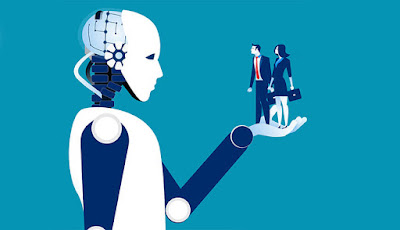Principles of Artificial Intelligence in the Organization
To make it better and more productive, technology designers, producers, and marketers should be open to scrutiny and consider the ethical consequences of artificial intelligence at work to make it for more efficient, resulting in better productivity.
The ubiquity of AI apps is already transforming daily lives for the better, despite its nascent nature. Whether referring to intelligent assistants like Apple's Siri or Amazon's Alexa, client service apps or the capacity to use large information ideas to streamline and improve activities, AI is rapidly becoming an essential tool for individuals as well as organizations.
In reality, according to Adobe stats, only 15 percent of companies are using AI as of today, but 31 percent is anticipated to add it over the next 12 months, and the share of employment requiring AI has risen by 450 percent since 2013. Artificially smart systems are programmed by humans to solve problems, assess risks, make predictions, and take actions based on input data.
Cementing the smart aspect of AI has resulted in the growth of machine learning to create predictions or choices without being explicitly programmed to execute the job. Machine learning, algorithms, and statistical models enable systems to learn from information and create opportunities based on patterns and inferences rather than particular guidelines.
Check This Out: Top AI Companies
Unfortunately, myriad ethical issues arise from the possibility of creating machines that can think. Ethical issues are emerging as AI continues to grow in significance and use, ranging from pre-existing biases used to train AI to social manipulation through newsfeed algorithms and privacy invasions through facial recognition. This concept shows the need for legitimate discussion about how these techniques can be developed and adopted responsibly.
How Do We Make AI-Generated Data Safe, Private, and Secure?
As a growing number of AI-enabled devices are being produced and used by customers and businesses globally, it has never been more essential to maintain those devices safe. The ever increasing capacity and usage of AI dramatically enhance the chance for malicious uses. Consider the hazardous potential of autonomous vehicles and arms that fall under the control of poor performers, such as armed drones.
As a consequence of this risk, it has become essential for IT departments, customers, company officials, and government to fully comprehend cybercrime policies that could lead to a threat setting driven by AI. Developers are not always able to identify how or why AI systems take different actions, and this is probably only to get harder as AI consumes more information and grows more complicated exponentially.
Read More: Principles of Artificial Intelligence in the Organization
The ubiquity of AI apps is already transforming daily lives for the better, despite its nascent nature. Whether referring to intelligent assistants like Apple's Siri or Amazon's Alexa, client service apps or the capacity to use large information ideas to streamline and improve activities, AI is rapidly becoming an essential tool for individuals as well as organizations.
In reality, according to Adobe stats, only 15 percent of companies are using AI as of today, but 31 percent is anticipated to add it over the next 12 months, and the share of employment requiring AI has risen by 450 percent since 2013. Artificially smart systems are programmed by humans to solve problems, assess risks, make predictions, and take actions based on input data.
Cementing the smart aspect of AI has resulted in the growth of machine learning to create predictions or choices without being explicitly programmed to execute the job. Machine learning, algorithms, and statistical models enable systems to learn from information and create opportunities based on patterns and inferences rather than particular guidelines.
Check This Out: Top AI Companies
Unfortunately, myriad ethical issues arise from the possibility of creating machines that can think. Ethical issues are emerging as AI continues to grow in significance and use, ranging from pre-existing biases used to train AI to social manipulation through newsfeed algorithms and privacy invasions through facial recognition. This concept shows the need for legitimate discussion about how these techniques can be developed and adopted responsibly.
How Do We Make AI-Generated Data Safe, Private, and Secure?
As a growing number of AI-enabled devices are being produced and used by customers and businesses globally, it has never been more essential to maintain those devices safe. The ever increasing capacity and usage of AI dramatically enhance the chance for malicious uses. Consider the hazardous potential of autonomous vehicles and arms that fall under the control of poor performers, such as armed drones.
As a consequence of this risk, it has become essential for IT departments, customers, company officials, and government to fully comprehend cybercrime policies that could lead to a threat setting driven by AI. Developers are not always able to identify how or why AI systems take different actions, and this is probably only to get harder as AI consumes more information and grows more complicated exponentially.
Read More: Principles of Artificial Intelligence in the Organization

Comments
Post a Comment